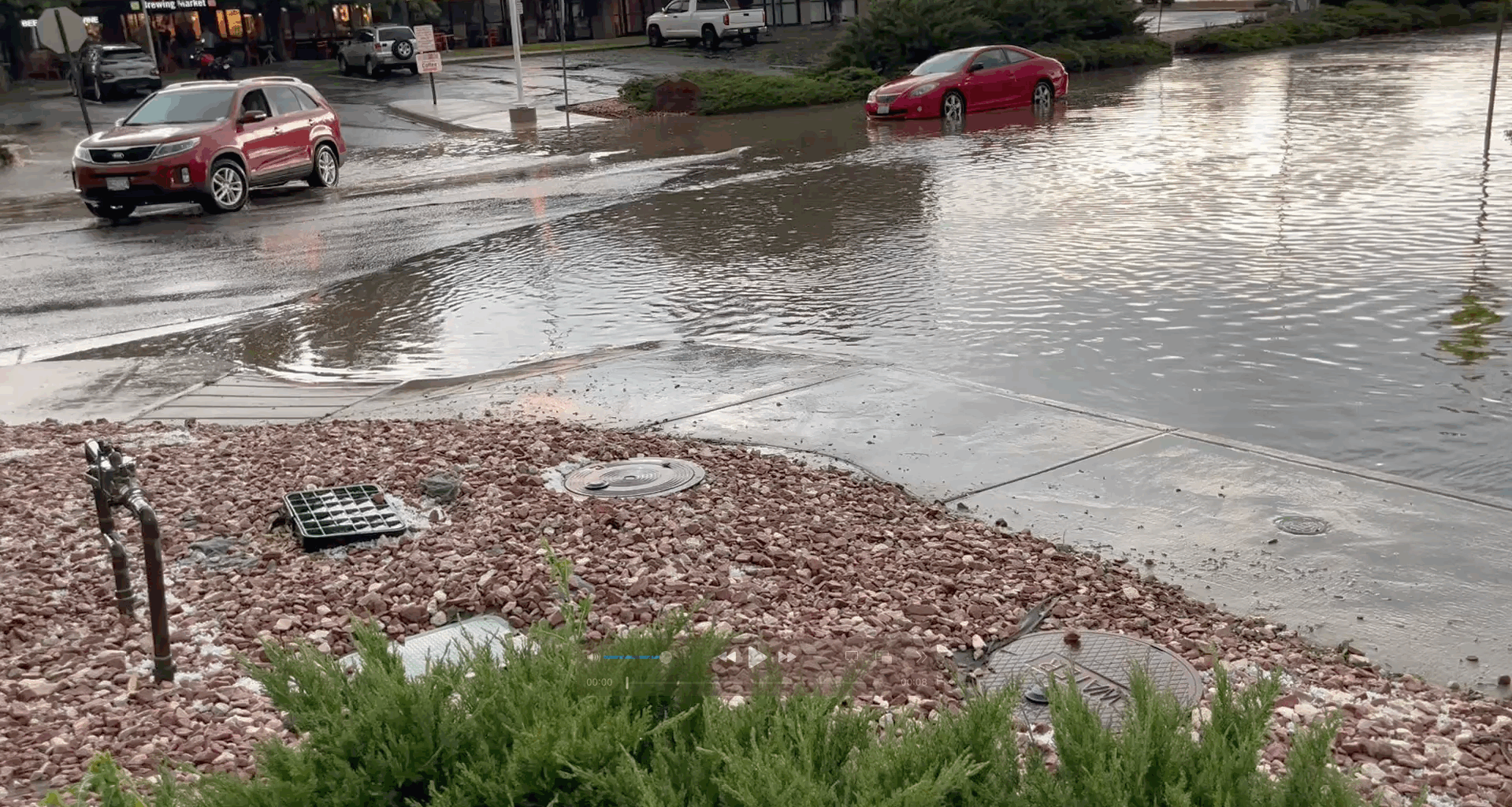As it turns out, chasing raindrops isn’t all that easy, and counting them is even harder.
As a result, a pioneering program to harvest rainwater on a commercial scale in Colorado will likely end next year if lawmakers don’t find a way to continue the work, according to Tracy Kosloff, deputy state engineer at the Colorado Division of Water Resources.
Individual homeowners will still be allowed to collect rainwater in rain barrels at their homes.
This Fresh Water News story is a collaboration between The Colorado Sun and Water Education Colorado. It also appears at wateredco.org.
The commercial pilot program was created in 2016 and authorized up to 10 water districts across the state to build site-specific rainwater harvesting programs that would work under Colorado’s complex water court system, where water rights are intensely scrutinized by other users, engineers and attorneys. Each has a legal right to challenge anything that could harm someone else’s rights.
But only one water district in fast-growing Douglas County stepped forward to participate.
Until lawmakers took action, large-scale site-specific rainwater harvesting was illegal because of the state’s water laws, which dictated that water that falls from the sky must flow to existing water right holders.
The pilot was designed to prove that stormwater that runs off paved surfaces in developed areas can be used without harming natural water supplies that existed prior to development.
And that’s no easy task. Just ask Andrea Cole, general manager of Dominion Water and Sanitation District, which serves the 33,000-acre Sterling Ranch in Douglas County.
Dominion was the only district to step forward to participate in the pilot. After years of measuring rain water, and two trips back to the state legislature to ask for amendments to the pilot program law, Sterling Ranch and Dominion are almost ready to head to water court, according to Cole.
If things go well, in another two to three years, Sterling Ranch will have access to 300 acre-feet of renewable water supplies, Cole said. That’s enough to help serve 1,500 homes a year in that water district, which uses high-tech water conservation systems and water-saving landscaping. (An acre-foot of water equals nearly 326,000 gallons. )
Cole said the pilot generated little interest in part because of the time and money involved in participating. It likely would have attracted more water providers if the state had targeted smaller communities and new developments that must work much harder to find water supplies than established communities such as Denver.
The pilot “shows there can be water and you could put it to beneficial use, but it takes diligence and effort,” she said.
The end result may be worth it. Dominion has spent $4.2 million designing, building and testing the rainwater system. Cole estimates the water will ultimately cost $25,000 to $30,000 an acre-foot, below the regional average of $42,000 an acre-foot.
In Douglas County, where most people live on water drawn from declining groundwater wells, renewable water supplies such as those derived from melting mountain snows and river flows are in high demand.
At a recent hearing before the Water Resources and Agriculture Review Committee, lawmakers expressed interest in extending the pilot.
Rep. Matt Martinez, a Democrat from the San Luis Valley and a committee member, said he is interested in creating more sources of sustainable water for metro Denver and Douglas County in particular, where several controversial efforts have been made to take water from the rural, drought-strapped farm communities he represents and send it to the Front Range. He said he hopes figuring out how to add rainwater harvesting to the state’s water supplies can work.
“I would hope that it does so that we can avoid reliance on the rural parts of the state where we don’t have the infrastructure or the water to meet the demands of new building,” he said.
But Martinez said more data will be needed to determine if commercial rainwater harvesting is viable.
“I believe that the water conversation needs to be elevated,” he said. “When we talk about how we’re growing and where we are growing that conversation needs to be at the forefront of everyone’s mind.”
Type of Story: News
Based on facts, either observed and verified directly by the reporter, or reported and verified from knowledgeable sources.


